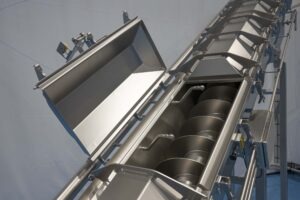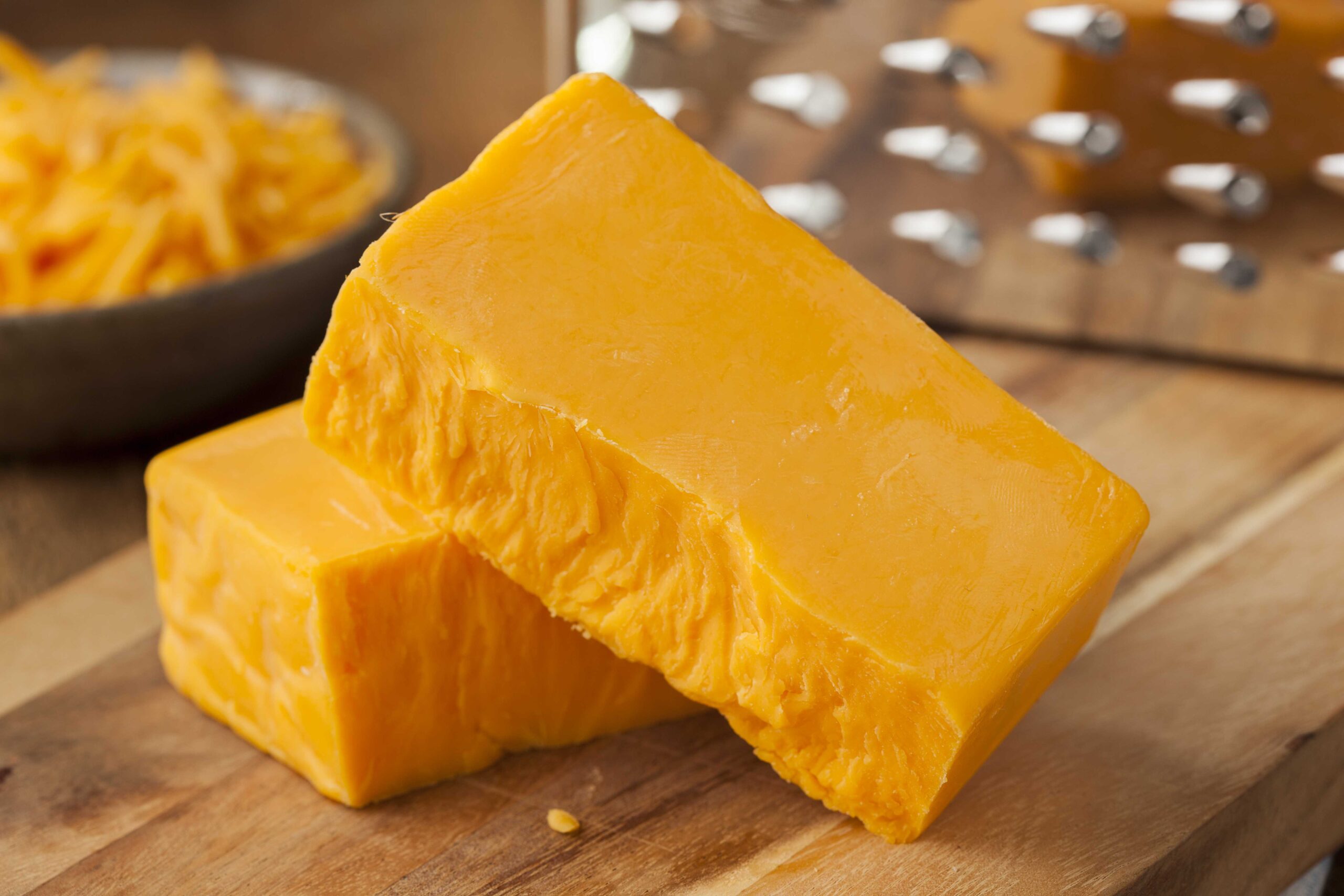Tetra Pak Cheese and Powder Systems, the Heerenveen-based designer of cheese and whey production lines, replaced a plastic conveyor belt previously installed on their globally implemented Tetra Pak Cheddaring machine with a Van Beek curd screw conveyor. The high-quality stainless steel inclined screw conveyor, which has an extremely high-level hygienic finish, is more than a reliable method for moving salted curd a few metres down the line. It means that this custom-made solution offers energy savings, a reduction in the number of spare parts, and a reduction in the use of salt in cheese production.
“Salt retention in the curd (curdled milk from which cheese is made, ed.) has been significantly improved since the screw conveyor was installed as a component into the Tetra Pak Cheddaring machine, which is our production system for making cheddar cheese and mozzarella”, says Sikko Ros, technical product manager at Tetra Pak Cheese and Powder Systems. “The salt, together with the curd, is transported upwards to the cheese-maturing machine, which means it is in contact with the curd for longer, resulting in a better salt absorption. This also reduces the amount of salt needed to meet the desired salt percentage in the cheeses.” Moisture loss during the production process also releases salt. In order to achieve the desired salt percentage of 1% in cheddar cheese, it was previously necessary to add twice the percentage of salt. According to Ros, the curd screw conveyor now reduces that percentage by a significant amount.

Corrosion causing the conveyor belts to wear quickly, and the subsequent damage to hinges were a decisive factor in replacing the parts of the impressive production plant where salt is added during the production process. “Salt acts as an abrasive, causing the conveyor belts to wear very quickly. In addition, salt collected between the hinges, which led to some conveyors needing to be replaced every six months or so,” according to the technical product manager. The screw conveyor proved to be a huge success, due to its high level of hygienic finish, absence of complex parts and the potential for developing a customized solution. The option to implement components developed by Tetra Pak itself was welcomed by Ros: “For our customers, we want to limit the number of spare parts in our machines to the greatest extent possible. The shaft seals and Clean-in-Place nozzles we provide are used not only in the screw conveyor, but also in other parts of the machine.” The fact that Van Beek subsequently improved the shaft seal developed by Tetra Pak by providing the shaft with a special surface treatment, puts a smile on Ros’s face. This interesting addition prompted him to obtain more information from Van Beek: “I found the special coating an interesting addition, which we might be able to use in other parts of our equipment.”
Modifying the design to suit customer experiences
The collaboration between Tetra Pak Cheese and Powder Systems and Van Beek dates back fourteen years, which means we can now talk about a reasonably standardised design, implemented worldwide as a link to a machine developed by Tetra Pak. Over the years, Van Beek has been able to increasingly adapt the curd screw conveyor to Tetra Pak’s specific needs, and to optimise the customised solution to fit each new project. Joram van der Heijden, Sales Engineer at Van Beek: “Curd screw systems for the production of cheddar cheese is a typical niche market, so it’s important to listen carefully to Tetra Pak’s end customers to ensure we incorporate everything in your design.” For example, the curd screw conveyor has a high-quality finish and the hygienic, smooth-ground and waterproof screw and housing are manufactured in 316 stainless steel with a surface roughness of 0.8 µ. A CIP liquid is used for cleaning; during the cleaning cycles the spray nozzles spray the screw and the inside of the housing from the top of the screw, after which the contaminated cleaning fluid is discharged through a drain point at the bottom of the housing. “Tetra Pak’s hygiene requirements can only be met using a screw system. Other means of transport are mechanically more complex, which results in dirt reaching places where you don’t want it and where it is difficult to remove. A screw system is a basic and simple design: it consists of a housing and a rotating screw. There are few corners, gaps or seams where dirt can accumulate,” Van der Heijden explains.
Increased production periods due to hygienic levels of finish
The market in which Tetra Pak Cheese and Powder Systems operates is constantly changing. For example, economies of scale are still increasing and factories are growing. Argentina and Brazil in particular are a growing market for mozzarella, due in part to the growing consumer demand for pizzas. So it’s not surprising that Tetra Pak customers want to produce for increasingly longer periods. In a 24-hour period, there would initially be a production duration of 20 hours, followed by 4-hours of intensive machine cleaning; however, today cheese manufacturers prefer a continuous production time of 40 hours. Ros: “To avoid bacterial growth during long production times, the hygienic design of a machine is becoming increasingly important, and short intermediate rinses are needed so that no residues remain where bacteria can grow during the intervals.”
Duplex Stainless Steel
The service life of a screw conveyor is becoming increasingly important. Especially with long-term use, with eroding ingredients such as salt and hard substances, due to an increasingly lower fat percentage. For this reason, Tetra Pak Cheese and Powder Systems is considering standardising its 316 stainless steel curd screw conveyors in Duplex stainless steel, which combines the best properties of chromium-nickel steel and chromium steel. “Duplex stainless steel is a better quality, but also more expensive and more difficult to machine. The last curd screw conveyor that Van Beek made for us was manufactured using Duplex stainless steel. However, we will not see the effect and degree of corrosion to this higher quality material until ten years from now. That need not stop us from seriously investigating whether to make Duplex stainless steel our standard”, says Ros, who also relies on the many years of excellent cooperation with Van Beek. “After all these years we speak the same language, which is definitely an added value. Van Beek knows exactly what we want, which makes the communication easy, clear and efficient.”
